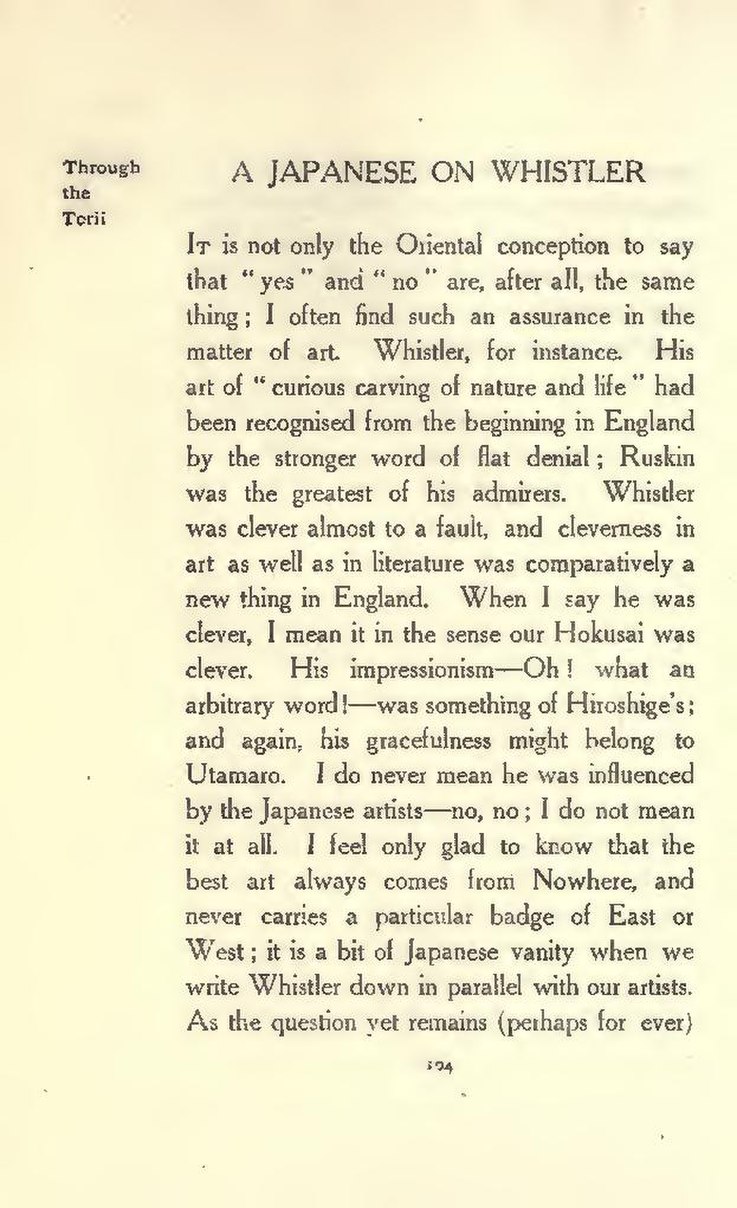It is not only the Oriental conception to say that “yes” and “no” are, after all, the same thing; I often find such an assurance in the matter of art. Whistler, for instance. His art of “curious carving of nature and life” had been recognised from the beginning in England by the stronger word of flat denial; Ruskin was the greatest of his admirers. Whistler was clever almost to a fault, and cleverness in art as well as in literature was comparatively a new thing in England. When I say he was clever, I mean it in the sense our Hokusai was clever. His impressionism—Oh! what an arbitrary word!—was something of Hiroshige’s; and again, his gracefulness might belong to Utamaro. I do never mean he was influenced by the Japanese artists—no, no; I do not mean it at all. I feel only glad to know that the best art always comes from Nowhere, and never carries a particular badge of East or West; it is a bit of Japanese vanity when we write Whistler down in parallel with our artists. As the question yet remains (perhaps for ever)
Page:Through the torii (IA throughtorii00noguiala).pdf/118
This page has been validated.
A JAPANESE ON WHISTLER
104
